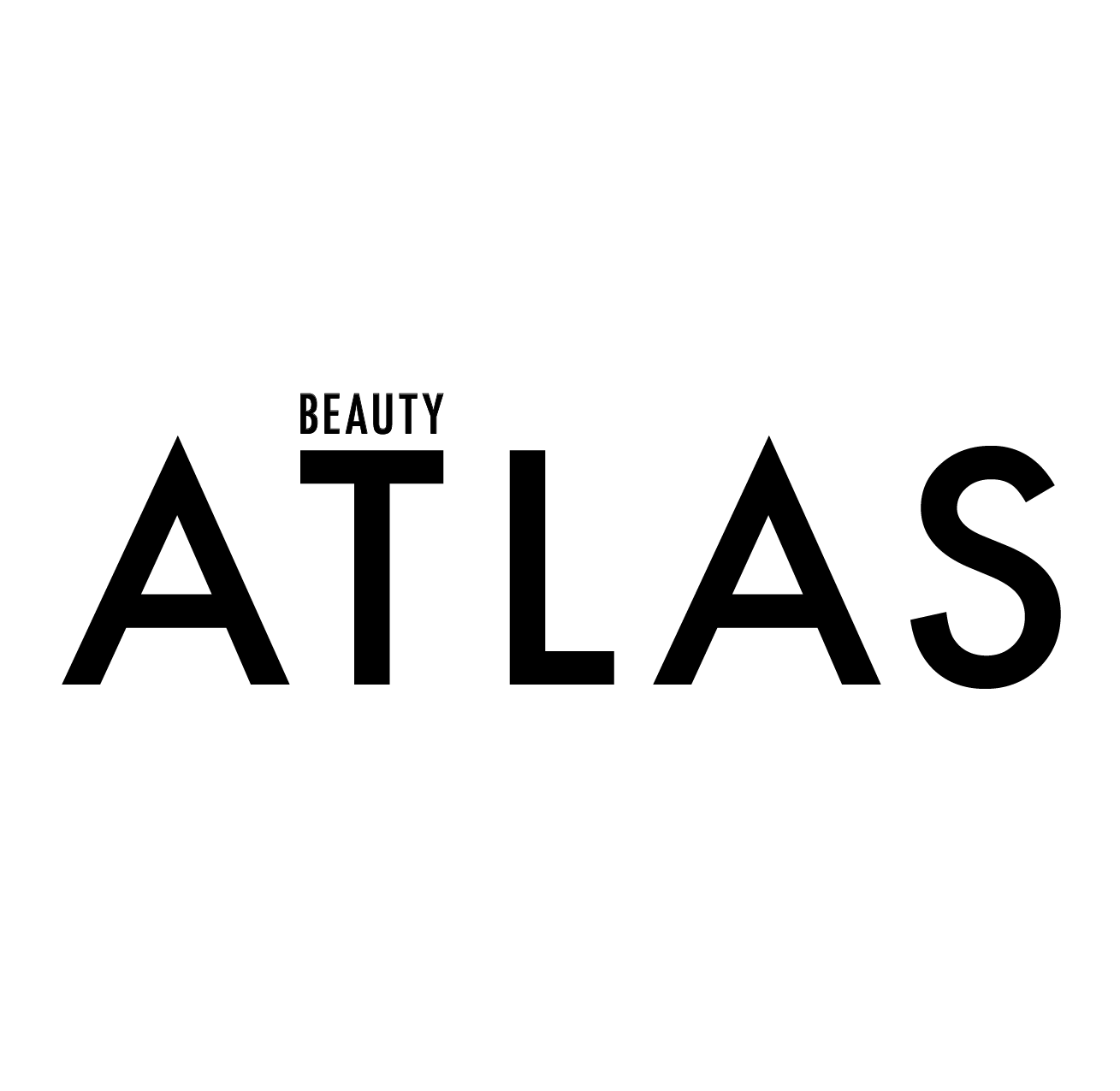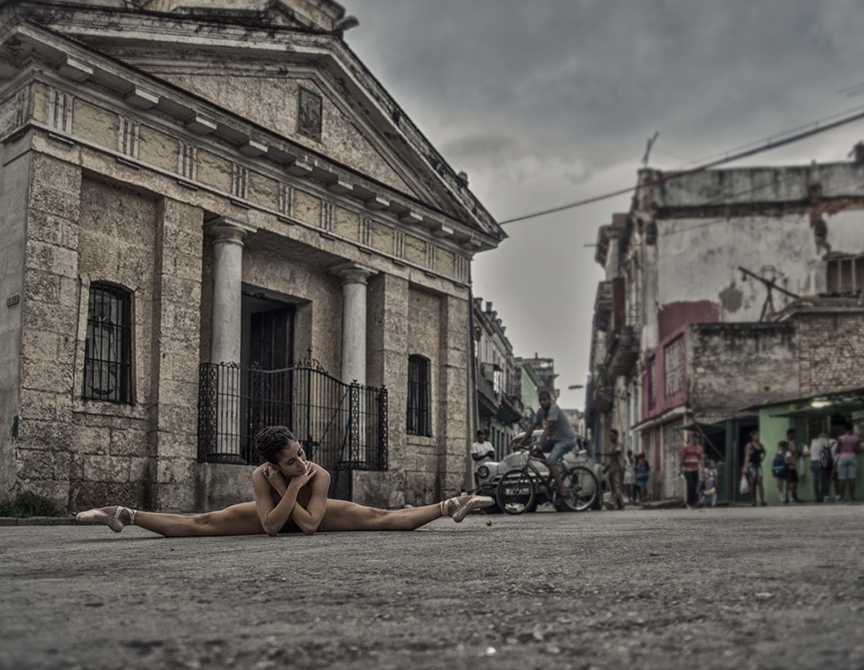Stunning Images of Nude Dancers on the Streets of Havana
The sensual aura that vibrates about Cuba inspired photographer Gabriel Davalos’s latest project: a photo series in which the island’s premier ballerinas pose on the streets of Havana in nothing more than their pointe shoes.
Photo: Gabriel Davalos
Photographer Gabriel Davalos, known for countless images of Cuba’s most renown dancers, recalls the start of his career. “I frequented ballet functions for 10 years—but
I was no common spectator,” he says. “I didn’t have the money to buy a camera, so I’d blink my eyes whenever I saw an image that I wanted to photograph.” Since scoring his first camera in 2010, the self-taught photographer has dedicated his craft to shooting only two subjects: ballerinas and the enigmatic elegance of Cuban landscapes. “I tell stories that describe life in my village using ballet as a pretext.” In his “Nude Series” set in Havana, Davalos narrates a story of intimacy between dancers and the city.
“Generally, we undress when we’re in a private space with people we trust. In this fantasy, it’s as though the city is an intimate space full of people that we trust wholeheartedly.” In the midst of pursuing his mission to harvest approximately sixty photos, eventually incorporating images of nude male dancers and couples, Davalos shared an exclusive look at the very first shots from this provocative series in our fall issue.
And universal accounts of body image issues within ballet culture informed one question when viewing Davalos’s compelling images: Do Cuban ballerinas experience the same pressures to be thin? We caught up with three dancers featured in Davalos’s latest project to weigh in. Each week for the remainder of December, we’ll share our full interview with each dancer in which they speak candidly about health and body image within the dance community in Cuba (plus, exactly what it was like posing nude in public). First up, Ana Lucia Prado Herrera.
—As told to Lyndsay Green (interview translated from Spanish)
THE MUSE
Ana Lucía Prado Herrera, 31
TITLE
Soloist, Ballet Nacional de Cuba
ON HER CAREER
“My first ballet lessons were at the age of five. At eight, I prepared for the examinations for the Escuela Nacional de Ballet [National School of Ballet] in Cuba and began my studies there at the age of nine. My career has been constant. I went through eight years of studies, then joined the Ballet Nacional de Cuba [National Ballet of Cuba], where I continue to train every day except Sunday. Since I started my studies, I’ve dedicated all of my time to dance and can’t imagine my life without it. For me, dancing is a necessity.”
ON DAVALOS’S INITIAL ASK
“Gabriel has been a friend of mine for years. He’s produced projects like television spots for the company that I belong to, so we’ve worked together before. But this is the first time that I’ve posed for him as a dance model. Visuals of dance models are interesting and rich. Beauty can be found not only in a sweet, tender image, but also in one that is strong and fierce. Gabriel has penetrated the imaginary world of the dancers [that he shoots]—I even believe that has come to think like them! His photographs capture the scenery that he chooses for his creations just as much as the figure of the dancer, and highlight both to the max.
I believe that dancers all over the world dedicate their lives to sculpting their bodies as a part of the same profession. All have their charm. The idea of creating something so beautiful using nude ballerinas in urban settings attracted me from the beginning—perhaps because I’m a romantic and envisioned the poetry of my Havana linked to the poetry of the body of a dancer. Since we already knew each other, I had professional respect for Gabriel (which was very important in making the decision to participate in this project). The shoot was very professional. We prepared everything before we arrived on the streets so that things would flow seamlessly on set—and my husband was nearby to help.
My photos in the series emphasize the natural beauty of the human body in unison with the intrinsic beauty in the everyday urban [nature] of our beloved Havana—a city where the old and the reality of the twenty-first century coexist. Collapsed buildings beside others that are painted but no less old, fruit vendors, children returning from school, people entering and leaving their homes. Another aspect that I like about my photos in this collection is that I tried to reflect something tender so that you could view the city with the same tenderness in your own eyes.”
ON BODY IMAGE AS A CUBAN BALLERINA
“Cuban ballerinas have the same struggles [as ballerinas all over the world]. Some are naturally thinner and suffer less than others who have to live subject to [strict] diets. Dancers here try to maintain a certain weight without gaining as shedding pounds is very difficult. However, it’s so important not to fall victim to eating disorders as they can hinder a dancer’s professional ability to perform. Weight is not the only important factor, but also muscle training. Together, they create the final display of a professional dancer. I believe that keeping a healthy diet is best—but it’s not easy.
As a kid, I had teachers who were very hard on me in regards to my weight, but I'm thankful that they were hard on me in ways that made me a better dancer. I believe that although they’re small, young dancers should be taught how to have a healthy diet, they should have the adequate help to maintain their diets, and above all, they should be taught to have a great sense of willpower as discipline is what makes the difference. It’s difficult, but what isn’t difficult in life? I have fought with many aspects of my own body image. I have overcome some [insecurities], others I’ve only improved, and some haven’t been resolved yet, but I learn to give my best in spite of them all.”
ON HER DIET AND FITNESS REGIMEN
“I've varied my way of eating a lot throughout my career. In Cuba, you have to make a great effort to maintain a diet that includes vegetables, proteins, fruits, dried fruits, some variety of dairy products, seeds, and so on. During my academic training when I was young, my parents were aware of this, which I’m eternally thankful for. The body goes through constant structural changes during the development phase, [so it’s important to give it the nourishment it needs]. As an adult, I did not always follow such a strict diet. The job of a dancer is non-stop and preparing such foods every day takes a lot of work. Luckily, at a certain age the body stabilizes and manages to maintain a consistent weight more easily. (The bad part is that it is also more difficult to lose a few pounds if that’s what you want!)
From Monday to Saturday, we have a ballet class at around 9:00 A.M. that lasts a little over an hour. From there, we have a variety of hour-long rehearsals distributed in shifts until 5:30 P.M. The number of classes that I have a day depends on the ballets that I’m in. I also try to do preparation exercises throughout the week whenever I’m free.”
Stay tuned for next week’s feature, where Ballet Nacional de Cuba soloist Glenda María García Gómez will share her story.

